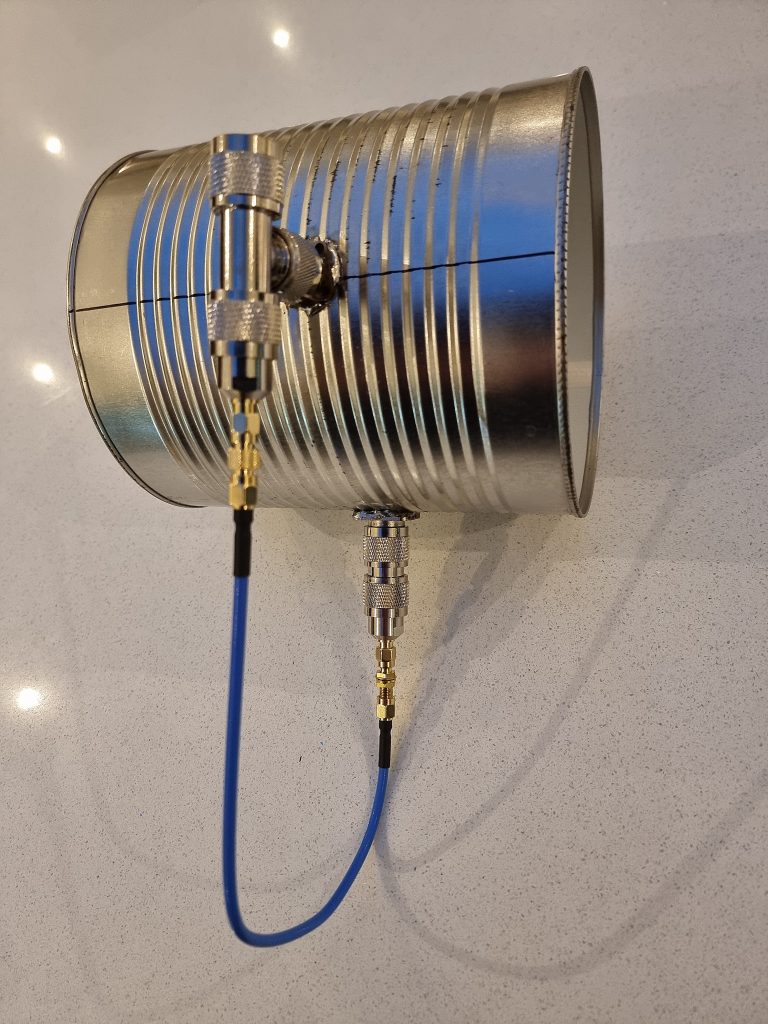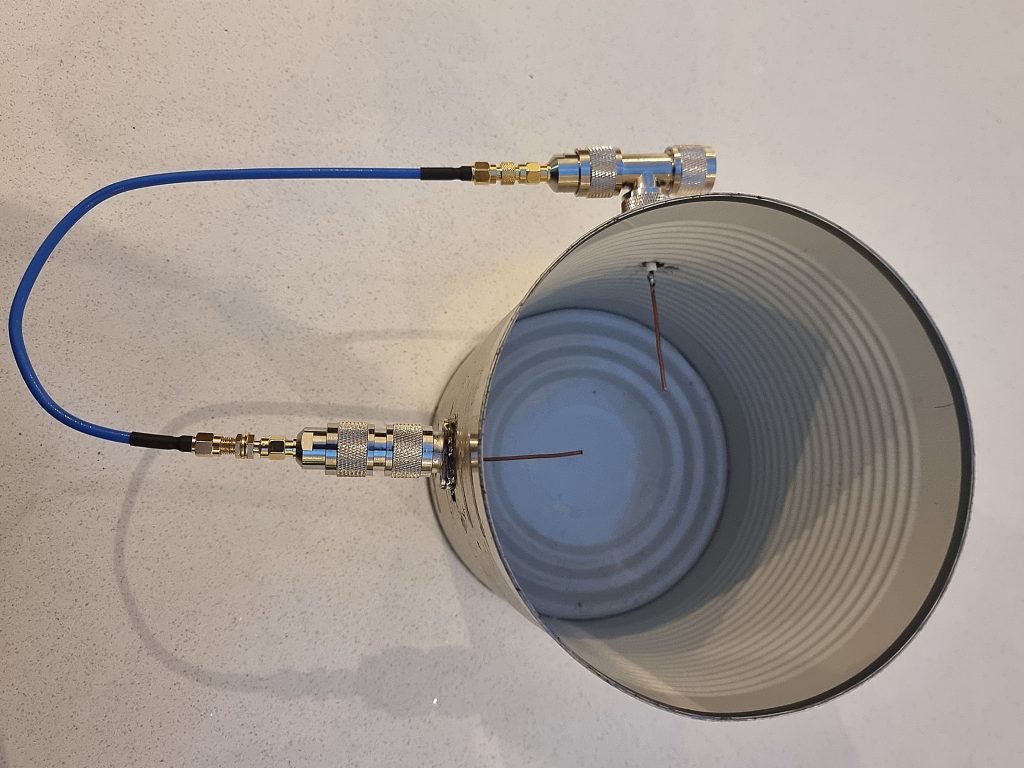Adding second monopole onto 1420 MHz cantenna at 90 degrees to first monopole in attempt to improve signal.
I tried adding second monopole onto 1420 MHz cantenna at 90 degrees to first monopole in attempt to improve signal, with 1.5 wavelength phasing cable on one monopole. I used 1.5 wavelengths as 0.5 wavelengths was too short for to reach the splitter.
I am going to test this system to determine whether it improves signal to noise ratio.
This arrangement is in photos below.
However, before I started using this arrangement to observe the sky, I discovered (via SARA Drakes Lounge – see Youtube video dated 21/9/2025) that this would be counter-productive and that, instead, I need to collect data via an LNA separately on each of the two monopoles and then combine digitally later. Read below on more information on this problem and the solutions.


QUESTION:
I am intending to try and improve the signal detection from my cantenna waveguide on my 150cm parabolic reflector at 1420MHz by adding second monopole at 90 degrees to first and combining the signals using a simple combiner with phasing cable (1.5 wavelengths) on one of the monopoles. Will this work?
ANSWER:
Short answer: not the way you’re proposing.
Here’s why:
- Two monopoles at 90° give you two orthogonal linear polarisations. For H I at 1420.405 MHz the astrophysical signal is essentially unpolarised, so each probe receives the same Stokes I power on average—but with independent receiver noise.
- A 1.5 λ phasing line is a 540° shift ≡ 180°. That only flips the sign; it does not make orthogonal polarisations add coherently. Unless you use a proper 90° hybrid to make circular pol, summing with a 180° shift just mixes two orthogonal fields that won’t add as a single coherent voltage.
- Any passive combiner in front of the LNA costs ~3 dB (ideal) plus mismatch/line loss. You double the signal power, but you also double the sky noise and add combiner loss before the LNA—so SNR stays the same or gets worse. In practice it usually gets worse.
- The phase line is narrow-band and touchy: at 1420 MHz, 1.5 λ in coax is ~21–27 cm depending on velocity factor. A few percent frequency/length error skews the phase; connectors and probe coupling add more uncertainty.
What will work:
- Build it as a proper dual-pol feed (two orthogonal probes with good isolation), run each into its own LNA and receiver chain, and then sum detected powers (or average spectra) in software. That gives you the textbook √2 ≈ 3 dB sensitivity gain with no pre-LNA loss.
- If you specifically want circular pol (not needed for H I Stokes I), use an orthomode transducer (OMT) + 90° hybrid (or a septum polarizer). Still keep two LNAs ahead of any combining.
- You’ll often get a bigger boost by: lowering pre-LNA losses (short, low-loss probe lead; quality connector), using a lower-NF LNA, improving return loss on the feed, and matching the dish edge taper to your f/D.
Hi Andrew, We met at Eucara in September, since then I’ve built a single monopole (polarized) canantenna although it not yet tested. I have been considering a helix antenna element instead of a dual pol feed to acheive full circular polarization but obviously its much more difficult to mount needing some form of insulated former to fit inside the tin can. I’m considering 3D printing a former but before I do that wondered if you had considered the same or know of a reason why this might be ineffective?
Of course it does remove the need for phasing lines, I’ve implemented such an arrangement in a 2.3GHz Digital TV transceiver to good effect.
Great website btw, so much info.
Regards
John M0MTW
Not something I have tried myself.
For cantennas, follow this thread on SARA list – https://groups.google.com/g/sara-list/c/OgHAjJ2kJLo
I know that there has been discussion on same SARA list about using circular waveguides – these apparently work well – see for example https://groups.google.com/g/sara-list/c/96zFqQG1y0A/m/12Be5qe3AQAJ
There has also been discussion about helical antennae – see for example https://groups.google.com/g/sara-list/c/2tPLw7NayH0/m/uApERh-gAAAJ
However I know very little about helical waveguides and your best bet is to join SARA (20 American Dollars) if you aren’t already a member and then post requests for help on the SARA list – lot of brilliant people there whose knowledge is like a mountain compared to my grain of sand of understanding! Best of luck!
Andy